Reflecting on the End of APAHM and the Model Minority Myth — From a Chinese-American Student
Asian Americans breaking the model minority mold.
June 7, 2020
Dear Readers,
My name is Daphne Han. I am a rising senior here at Kingwood High School. This is a reflection of sorts on what APAHM (Asian Pacific American Heritage Month) means to me, especially during this time and specifically address Asian Americans who “benefit” from being portrayed as the model minority.
Growing up as a Chinese American was a battle. I struggled with accepting my identity, loving myself, and embracing my culture for years. It was only recently that I began to fully accept and love myself for who I was. May marks the Asian Pacific American Heritage Month– a month dedicated to celebrating Asians and Pacific Islanders residing in the United States. I am currently running a project called Asians of America where I collect stories and experience from various Asian Americans across the country to share in hopes of creating a sense of unity and to showcase the rich diversity of Asian America as well as what it means to be Asian American. Originally for the month of May, I had planned a video project celebrating Asian culture and identity and this article was also going to be a celebration of our footprints here. However, with recent events regarding the murder of George Floyd by a white police officer and three other officers who watched it happen(one of them being Asian), I don’t feel like it’s right for me to just simply celebrate Asian heritage. While we celebrate our history and culture, we should acknowledge the silence in our community sometimes when it comes to racism (note: again, this is addressing Asian Americans who benefit off of the model minority myth and stay silent because of this)
I grew up in Kingwood, a pretty affluent suburb on the outskirts of Houston. Although I didn’t know what “racism” was in my early childhood, I experienced the vast majority of it from preschool to middle school. In preschool, we had a party and we were assigned to bring food to share at the party. I brought one of my favorite sweets– traditional Chinese/Taiwanese pineapple cake. However, my teacher told me that she had never heard of these and ended up throwing away all of the pineapple cake that I had brought because she couldn’t be sure if it was safe to eat, even though this was packaged and store-bought and other kids had brought homemade desserts. In Kindergarten, I brought dumplings for lunch and immediately, the kids at my table all said it looked gross and smelled. I threw away my lunch without touching anything and for the next few years, I was embarrassed to eat lunch every time my mom packed me Chinese food and would usually (without her knowing) toss all of it in the trash can. I felt ashamed then and now, but for different reasons. On the school bus, kids would pull at their eyes back and chant “Chinese, Japanese, dirty knees, look at these” almost daily. Other times, they would start saying “Ching Chong” or other variations. We used to have a teacher on the bus with us for younger elementary school students, yet she never stopped these students from making these racist comments or chants. In the fifth grade, a substitute asked me and another Chinese-American student if we were identical twins after having gone through roll call and clearly seeing we had different last names. Looking back on it now, I am shocked and disappointed in the ignorance and complacency of some of my teachers. There were many more incidents that I can still recall that occurred later on and even recently; however, for the sake of moving on, I will not mention all my experiences. I think I’ve recalled enough to get my point across.
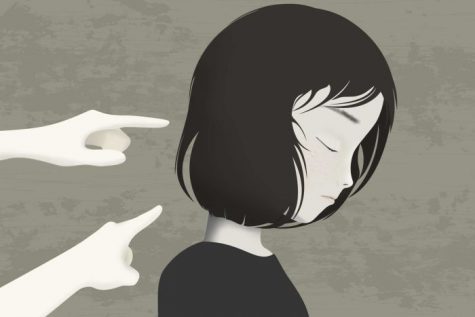
Despite all the racism and microaggressions I’ve experienced growing up in Kingwood, I never feared for my safety or my life. I didn’t have to worry about going on bike rides or jogs by myself. I didn’t have to feel anxious about potentially getting pulled over by a cop or just running into one. I know many Asian Americans, like me, have never really felt our life being in danger just because of our race until recently with the outbreak of COVID-19. This was the first time many of us could possibly remotely understand what our black brothers and sisters go through their whole lives.
Of course, this does NOT in any way discount the struggle of racism and discrimination that Asians have faced in America. In the 1850’s, many men from China were recruited as contract laborers and came to America. They made up 20% of California’s labor force even though they only represented 0.002% of the entire population. However, many complained of Chinese laborers taking away jobs, which led to anti-Chinese legislation and violence throughout the West coast, such as the Chinese Exclusion Act. Back in 1905, the San Francisco School Board created a segregated Chinese Primary School which included American-born Chinese students. This eventually extended to Japanese students as well. During World War II, Japanese internment camps were established by Roosevelt in his Executive Order 9066. This order relocated approximately 117,000 people, many of whom were American citizens. Other countries such as Canada and Mexico also followed after American in relocating Japanese people to military zones. The US also invaded the Philippines in an attempt to exploit and colonize the country.
There are huge issues with anti-blackness in Asia ranging from blackface, the desire to be “pale” or “white”, and more. Of course, I definitely don’t mean that every single Asian American has grown up with racist values. However, there is definitely still an issue with anti-blackness lingering in the AAPI community and although it has definitely become better in recent years with the younger generations, there is still much progress to be made.
Speaking from my own experience, I believe some of the anti-black mindset in the community stems from the dangerous embracing of the “model minority” myth.
Andrew Sullivan states in the Intelligencer from the NY Magazine: “I mean, how on earth have [Asians] done so well in such a profoundly racist society? How have bigoted white people allowed these minorities to do so well — even to the point of earning more, on average, than whites? Asian-Americans, for example, have been subject to some of the most brutal oppression, racial hatred, and open discrimination over the years. In the late 19th century, as most worked in hard labor, they were subject to lynchings and violence across the American West and laws that prohibited their employment. They were banned from immigrating to the U.S. in 1924. Japanese-American citizens were forced into internment camps during the Second World War, and subjected to hideous, racist propaganda after Pearl Harbor. Yet, today, Asian-Americans are among the most prosperous, well-educated, and successful ethnic groups in America. What gives? It couldn’t possibly be that they maintained solid two-parent family structures, had social networks that looked after one another, placed enormous emphasis on education and hard work, and thereby turned false, negative stereotypes into true, positive ones, could it? It couldn’t be that all whites are not racists or that the American dream still lives?”
This paragraph was very poorly written by Sullivan and also shows the lack of understanding regarding racial immigration policies in the past and portrays Asians as the model minority. The model minority narrative was created by white mainstream media back in the 1960s during tensions surrounding the Civil Rights Movement in order to “de-legitimize” racism claims from African Americans. This pitted Asian Americans and African Americans against each other. After Japanese Americans returned from the internment camps, the media “created the idea that the Japanese were rising up out of the ashes and proving they had the right cultural stuff” according to Claire Jean Kim who is a professor at UC Irvine. This was intended to denigrate African Americans and basically said that their struggles and hardships were not due to racism but their own inability to do better. It is also important to note the Asian hyper-selectivity in immigration. Hyper-selectivity refers to a dual positive selectivity in which immigrants are more likely to have graduated from college than non-migrants in sending countries and the host population in the United States. Research has shown that hyper-selectivity positively affects the second generation and it makes sense that children of parents who have college degrees are more likely to attend college. This, along with the psychological impacts of feeding into the model minority myth of Asian Americans being the “most successful minority group” and the “hardest workers” as well as the stereotypes of being “smart” or “deserving” affects the inner and outer perceptions of the group as well as its own socioeconomic mobility. The model minority myth also groups Asian immigrants into one large monolithic group and does not consider the huge contrasts in socioeconomic status between different Asian ethnic groups.
Playing into the model minority myth drives a wedge in between Asian Americans and African Americans. Unfortunately, this has also resulted in the complacency and silence of many Asian Americans when it comes to issues such as racism. In some cases, many of those who uphold the model minority even tolerate racism that is targeted towards them. As a result, many Asian Americans who uphold being the model minority are becoming exactly what the model minority construction was meant to do — staying passive and silent.
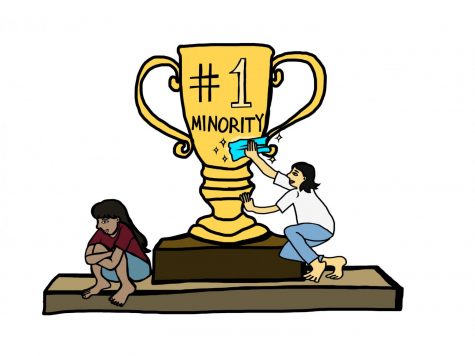
According to a survey from the Pew Research Center back in 2012, “About one-in-five Asian Americans say they have personally been treated unfairly in the past year because they are Asian, and one-in-ten say they have been called an offensive name. Older adults are less likely than young and middle-aged adults to report negative personal experience with bias. Compared with the nation’s two largest minority groups—Hispanics and blacks—Asian Americans appear to be less inclined to view discrimination against their group as a major problem. Just 13% of Asian Americans say it is, while about half (48%) say it is a minor problem, and a third (35%) say it is not a problem.” Again, going back to my earlier statements, Asian Americans do face discrimination and racism; however it is in no way comparable to the atrocities that African Americans have faced in this country and how America’s dark history with slavery, oppression, and injustice has continued to affect Black Americans today.
This is a problem we cannot ignore. I admit, I have been extremely ignorant in the past and even up until recently. I continue to make a conscious effort to learn and educate myself to better understand the people around me. I have seen many comments online from Chinese Americans specifically such as, “Black people attacked Asians during the COVID-19 outbreak and didn’t stand up for us, so why should we stand up for them” when Asian activists were sharing information in support of the Black Lives Matter movement. Now is not the time to stay silent. It is certainly hurtful to see the aggressors behind some of these attacks, but we all benefit from advocating for racial justice. We must support each other, especially during this time. Asian Americans have been powerful activists in the past, but unfortunately, we often aren’t taught this in history classes. A wonderful activist whom I recently learned about is Yuri Kochiyama, a Japanese-American woman who became a Civil Rights activist after returning from the Japanese internment camps and befriended prominent Black Civil Rights activist, Malcolm X. Kochiyama was largely inspired and influenced by the Black Civil Rights movement, which she was an active participant and advocate for, and used her experience in the internment camps to demand reparations for Japanese Americans. Eventually, her efforts inspired the 1988 Civil Liberties Act, a formal apology and reparations to Japanese Americans from the government signed into law.
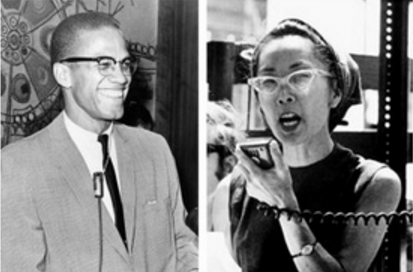
The end of APAHM does not mean an end to celebrating Asian heritage and culture. We should celebrate our heritage every day as well as continue to stand up for ourselves as well as other minority communities. Again, I really want to clarify that this is in no way discounting the struggles the AAPI community has against racism and discrimination. I am incredibly proud of my community and thankful for all that my parents have done for me. For any Asians who benefit from the model minority myth, please separate yourself from this. Remember the history of Asian Americans in this country. Upholding the model minority status will not keep us exempt from racism or discrimination and it instead keeps us complicit about racism against us and other minorities.
Celebrate your heritage, your hard work, and your accomplishments. Continue to educate yourself as well as those around you. Don’t be afraid to speak up and voice your opinions, even if it makes you uncomfortable. Be proud of being an Asian American, and not the model minority.
Sources and References Used:
“Asian Americans Then and Now.” Asia Society,
asiasociety.org/education/asian-americans-then-and-now.
Cis. “The Legacy of the 1965 Immigration Act.” CIS.org,
cis.org/Report/Legacy-1965-Immigration-Act.
History.com Editors. “Japanese Internment Camps.” History.com, A&E Television Networks, 29
Oct. 2009,
www.history.com/topics/world-war-ii/japanese-american-relocation#:~:text=Japanese%20internment%20camps%20were%20established,be%20interred%20in%20isolated%20camps.
Sullivan, Andrew. “Why Do Democrats Feel Sorry for Hillary Clinton?” Intelligencer,
Intelligencer, 14 Apr. 2017,
nymag.com/intelligencer/2017/04/why-do-democrats-feel-sorry-for-hillary-clinton.html.
“The Rise of Asian Americans.” Pew Research Center’s Social & Demographic Trends Project,
30 May 2020, www.pewsocialtrends.org/2012/06/19/the-rise-of-asian-americans/.


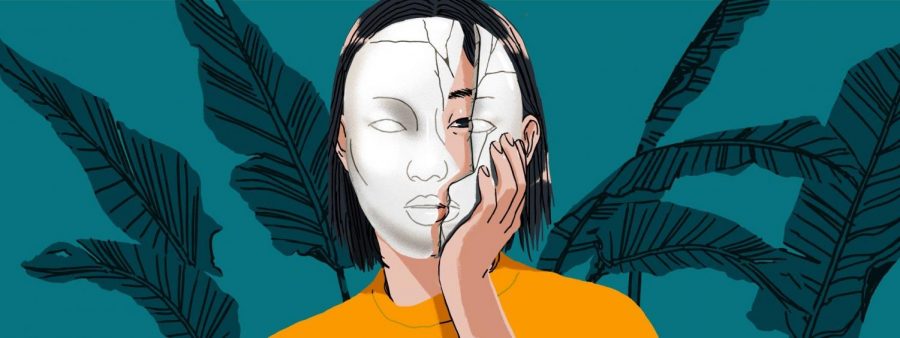
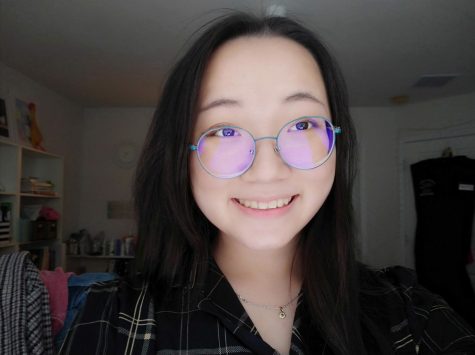
Kateri Lirio • Oct 22, 2020 at 12:45 pm
Daphne, I’m a grad student studying social justice and music. I really appreciated this article and referenced it in one of my assignments. Like Yuri, keep doing the work!!